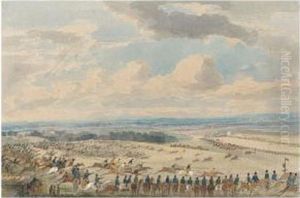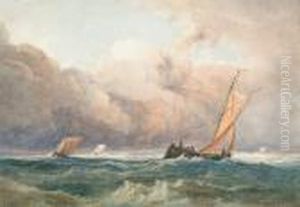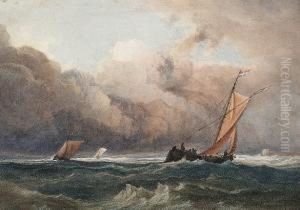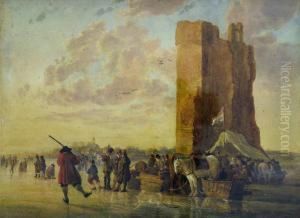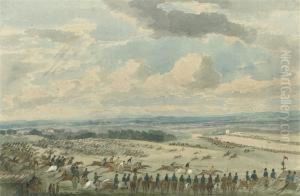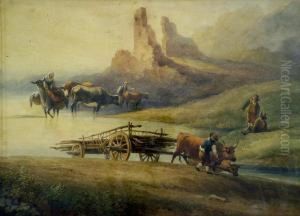C. John Mayle Whichelo Paintings
C. John Mayle Whichelo was a British artist born in 1787, primarily known for his work as a landscape painter. His full name, Charles John Mayle Whichelo, reflects the era's custom of using multiple names. Little is known about his early life or artistic training, but his works suggest that he had a keen eye for detail and a deep appreciation for the British countryside.
Whichelo's paintings often depict serene pastoral scenes, coastal views, and historical landmarks, capturing the romantic essence of the British landscape during the 19th century. He was active during a period where there was a great interest in landscape painting in Britain, influenced by the work of artists like J.M.W. Turner and John Constable. However, Whichelo never achieved the same level of fame as his contemporaries, and as a result, his name is not as widely recognized in the canon of British art history.
Throughout his career, Whichelo exhibited at prestigious institutions such as the Royal Academy and the British Institution. His works were appreciated by a number of patrons, and he received commissions that allowed him to continue painting and exhibiting his works. Despite the lack of extensive documentation on his life, his surviving paintings continue to provide insight into his artistic style and the subjects that captivated him.
Whichelo lived through a dynamic period in British history, a time marked by the Industrial Revolution, social change, and the rise of the British Empire. His landscapes serve as a visual record of the era's rural and coastal environments, often untouched by industrialization, and they reflect a nostalgia for an idyllic England.
He passed away in 1865, leaving behind a body of work that, while not as celebrated as that of his peers, contributes to the understanding of British landscape painting in the 19th century. Today, C. John Mayle Whichelo's paintings can be found in art collections, both public and private, and occasionally appear at art auctions, where they continue to be appreciated by collectors and art enthusiasts.


